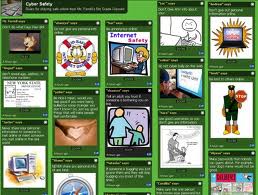"Flipped Classroom" by Jon Bergmann
Link:
http://www.edutopia.org/blog/take-students-deeper-flipped-learning-jon-bergmann
I really enjoyed reading this blog because it discussed how classroom structure impacts the way students learn. If you think about the way classrooms have been set up traditionally, they had a chalkboard in the front of the classroom. And then those chalkboards become white boards. Then, those white boards became overhead projectors, which then turned into LCD projectors that are hung on the ceiling. But really the classroom in all of those situations is a presentation station. It's not a center of learning. I really like the evidence that he mentioned about flipped classrooms saving time and space but I feel it may not work in all settings. In my feild placement the desks are is sets of two, they are essentially lab tables, that can move but if reshaped there would not be no room in the class to fit all the tables.
The Flipped classroom is a transitional tool for educators to move away from being the center of attention in the classroom and move that attention onto students and onto the learning that's happening in those classrooms. Although I agree with this, it may not be possible for all classrooms to do this. I asked Jon to perhaps he could provide some advice to teachers who want to incorporate flipped learning in their classrooms when the have immobile desks? I notice that in our EDUC classes, especially our methods we have a flipped classroom set up and I feel it is very comfortable and prompts me to engage with my peers more. I wonder what advice Jon will give me (if any at all).










